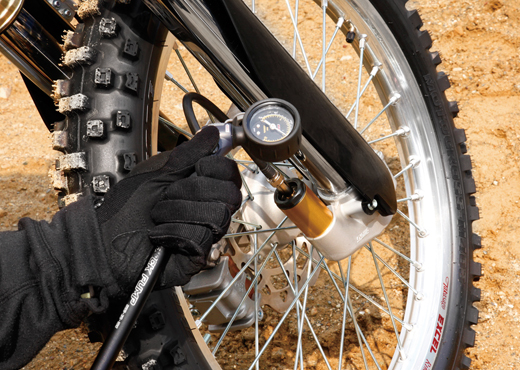Bike lets you be as aggressive or gentle as you decide to be
Suzuki's latest RM-Z450 motocrosser may not be an all-new bike, but it's still a potent signal the Japanese company means business out on track, as it's lifted its game for 2015.
The original bike was no slouch. First launched back in 2005, it took the MX1 world championship in 2007 and has since held four AMA motocross championships, two AMA supercross season titles, has taken the top of the championship podium in Australia four times - including both motocross and supercross titles in 2013 - and the New Zealand top step twice. You get the picture.
The most notable changes for 2015 are the Showa air fork and Holeshot Assist Control (S-HAC), though the 449cc liquid-cooled four-stroke engine's had a few tweaks too - largely to improve starting and cooling, rather than boosting power.
The S-HAC lets you dial in the engine for a launch that best suits conditions and rider skill - smoother for novice riders or slippery conditions, an aggressive response in good grip or for skilled riders, and "normal" mode.
But few would consider your average motocrosser "normal" - the bike measures a hardly normal 955mm at the seat top, and just look at the height of those jumps - and our expert tester was impressed.
"The full-on mode is for a high-traction start where you really have to shift shit. It's a really grunty mode that'd get you off the line in deep sand. You wouldn't use it on hard-packed ground as you'd get too much grip and have the front wheel pawing the air."

The revolutionary suspension component is one of the most striking features of the RM-Z450, which is about a kilogram lighter than its predecessors.
Other than that, changes to the powerplant are largely limited to starting and cooling. The kick-start lever was reshaped and is 30mm longer, there's a redesigned decompression system, a bigger kick drive gear and a few other tweaks that those riding at the Purini Bike Park, Te Puke launch venue reported have made a big improvement. "It starts super-easy - it's not just marketing blurb."
There have been changes to the cooling system to greatly improve water flow, and a few minor gearbox tweaks for better shift feel - Suzuki bikes have always shifted well, though.
Suzuki says that overall the alterations boost low rpm power and torque, and while the supplied graphs don't seem to show much difference, our expert tester says, "The motor is fast and gutsy with a reasonable amount of over-rev," i.e. it doesn't hit the rev limiter too early, "and the improvement feels stronger than a glance at the graph suggests."
What has made quite a difference is the air fork, though if the launch experience is anything to go by, only serious racers are likely to make best use of it.
Effectively it dispenses with a coil spring, so it's 1.1kg lighter, the inner tube diameter is up and so's the rod size. Until now a heavier or more skilful rider has had to change to a soft or hard spring, but air forks mean you don't have to buy anything, you just use an air pump, and because spring and damper functions are separate, there's no heat, so performance should be more stable. The Suzuki system uses three chambers, with two valves at the top of the fork and one at the bottom, which is where the rot could set in.
Our tester's a bit impatient: "By the time I'd done one I'd just want to go riding ..."
He reckons it'd take a bit of a learning curve to make the best of it, and you need to put some time into it fairly regularly if you want to tailor bike to track. That said, the lighter weight is felt in lighter handling, and there's a lot of adjustability, so a keen rider could almost literally set the bike up for each different moto, without having to do more than wield the air pump. And unlike, say, the Kawasaki equivalent, you only need to alter two air pressures, not three, if you want it significantly harder.
Other changes include a redesign to the main frame that reshapes the interior for more rigidity for the rear section and weight savings - in total the fettling to this year's machine, plus and minus, result in a 1kg reduction to 112kg wet for this RM-Z450.
Really the only quibble we reported from our track testers was the front brake, which a racer might want to upgrade.
Overall the 450 felt stronger, and our tester - whose preference is for agile bikes - felt it's now easily one of the best-handling of the breed.
"If you like a stable, slow-steering bike it won't suit you, but turn-in is effortless: this thing is awesome."

